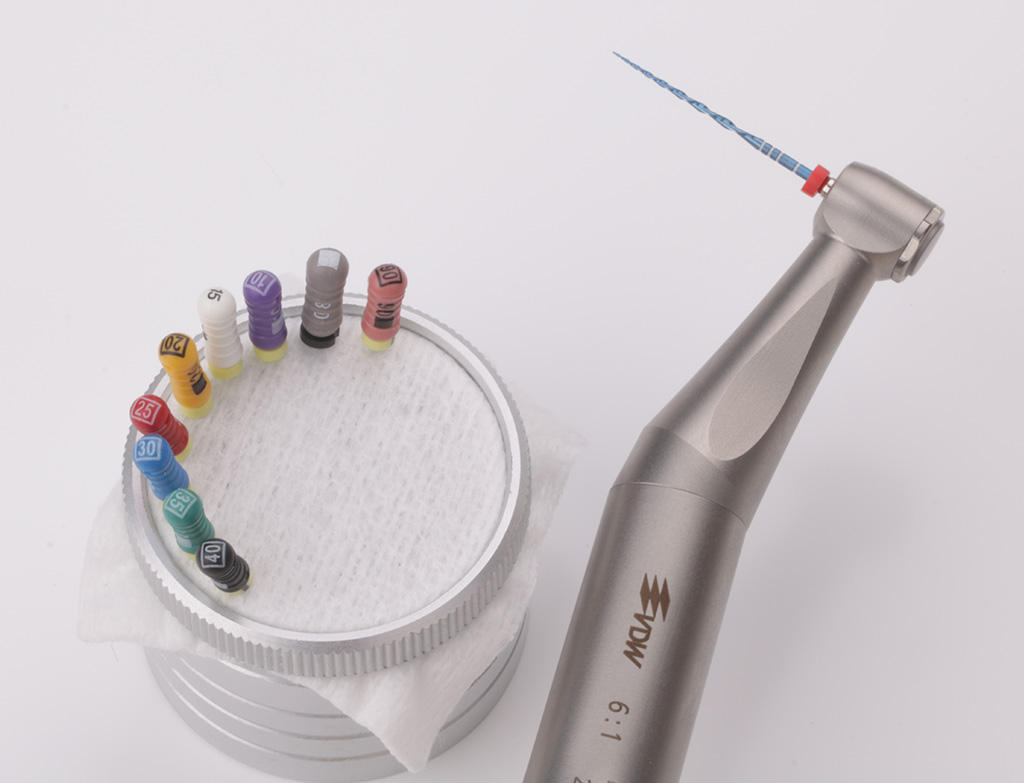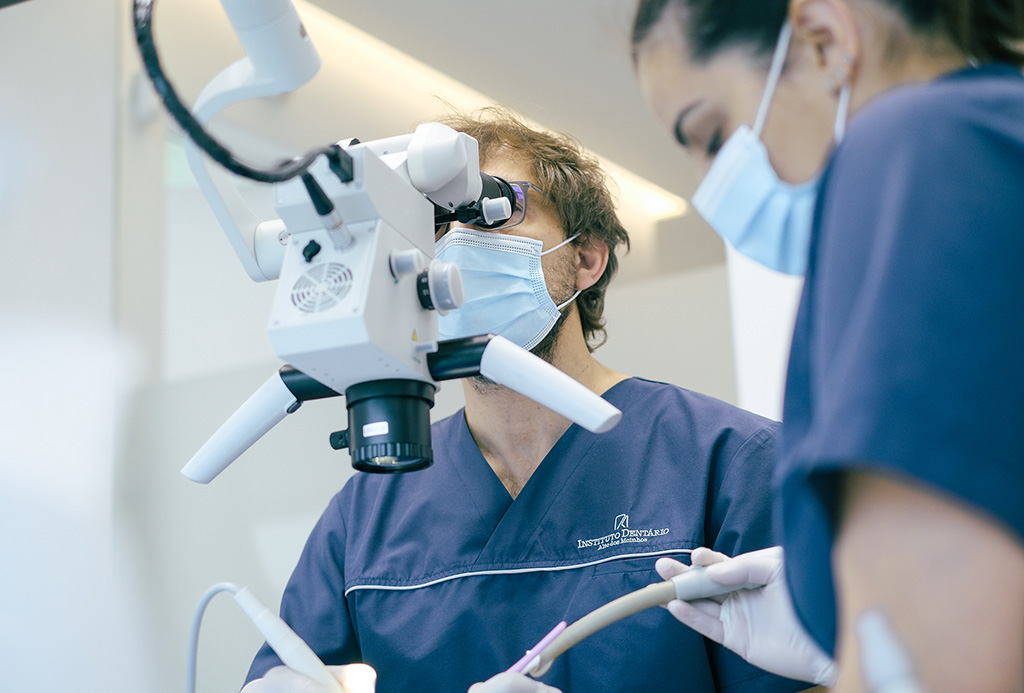Step by step of the Endodontic Treatment
1. If, after careful clinical and radiographic assessment, it is determined that endodontic treatment is the best option for a particular tooth, the procedure begins with a coronal opening, allowing access to the pulp chamber and exposing the tooth’s nerve.
2. All the dental pulp tissue is removed and the root canals present in the roots are disinfected using irrigating solutions, in order to eliminate all the bacteria and prevent new infections.
3 Next, the root canals are prepared so that the tooth can be filled and sealed using biocompatible materials and techniques adapted to each case.
4 Once the endodontic treatment has been completed, the tooth must be rehabilitated with a crown or any other restoration (composite resins or indirect restorations), depending on the extent of the cavity, in order to acquire the lost function and mimic the aesthetics of the natural dentition.
If properly rehabilitated, a devitalised tooth has a similar lifespan to a natural tooth.
Faq
In order to provide maximum comfort during endodontic treatment, we use local anaesthesia, combining the technical experience of the dentist with modern technology, so that there is no pain during the process. The effect of the local anaesthetic will be reversed shortly after the treatment has finished.
Nowadays, most endodontic treatments are carried out in one or two visits.
Once the endodontic treatment has been completed, the main precaution is to reconstruct the tooth as soon as possible in order to prevent future complications.
Another precaution is to carry out clinical and radiographic monitoring 6 months after endodontic treatment, which in some cases may extend to the disappearance of the apical lesion.
Endodontic treatment involves removing all of the dental pulp tissue and disinfecting the root canals in the roots. It is only in cases where this cleaning of the inside of the tooth is not done properly that the tooth darkens.
In these cases, internal teeth whitening can be performed, which consists of placing a small amount of bleaching agent directly into the pulp chamber of the tooth, allowing the tooth’s original colour to be conservatively restored.
No, endodontic treatment allows severely decayed or fractured teeth to be restored and maintained in the oral cavity so that, together with restorative treatment, it is possible to restore the tooth’s chewing function and aesthetic appearance.
CONTACT
Schedule yout Appointment
Leave your contact details and we’ll book your appointment within 24 hours.


